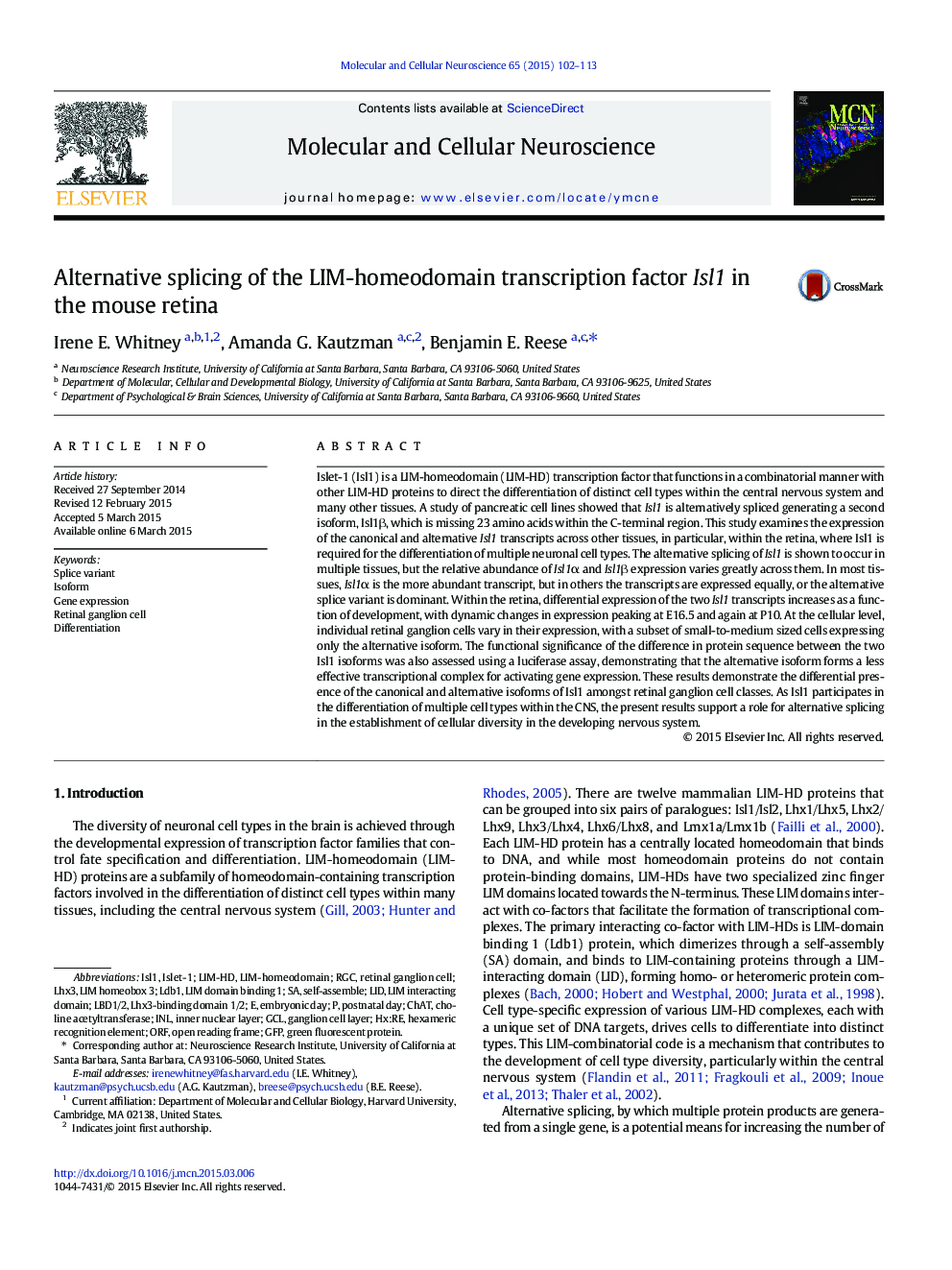| Article ID | Journal | Published Year | Pages | File Type |
|---|---|---|---|---|
| 8478578 | Molecular and Cellular Neuroscience | 2015 | 12 Pages |
Abstract
Islet-1 (Isl1) is a LIM-homeodomain (LIM-HD) transcription factor that functions in a combinatorial manner with other LIM-HD proteins to direct the differentiation of distinct cell types within the central nervous system and many other tissues. A study of pancreatic cell lines showed that Isl1 is alternatively spliced generating a second isoform, Isl1β, which is missing 23 amino acids within the C-terminal region. This study examines the expression of the canonical and alternative Isl1 transcripts across other tissues, in particular, within the retina, where Isl1 is required for the differentiation of multiple neuronal cell types. The alternative splicing of Isl1 is shown to occur in multiple tissues, but the relative abundance of Isl1α and Isl1β expression varies greatly across them. In most tissues, Isl1α is the more abundant transcript, but in others the transcripts are expressed equally, or the alternative splice variant is dominant. Within the retina, differential expression of the two Isl1 transcripts increases as a function of development, with dynamic changes in expression peaking at E16.5 and again at P10. At the cellular level, individual retinal ganglion cells vary in their expression, with a subset of small-to-medium sized cells expressing only the alternative isoform. The functional significance of the difference in protein sequence between the two Isl1 isoforms was also assessed using a luciferase assay, demonstrating that the alternative isoform forms a less effective transcriptional complex for activating gene expression. These results demonstrate the differential presence of the canonical and alternative isoforms of Isl1 amongst retinal ganglion cell classes. As Isl1 participates in the differentiation of multiple cell types within the CNS, the present results support a role for alternative splicing in the establishment of cellular diversity in the developing nervous system.
Keywords
Related Topics
Life Sciences
Biochemistry, Genetics and Molecular Biology
Cell Biology
Authors
Irene E. Whitney, Amanda G. Kautzman, Benjamin E. Reese,
